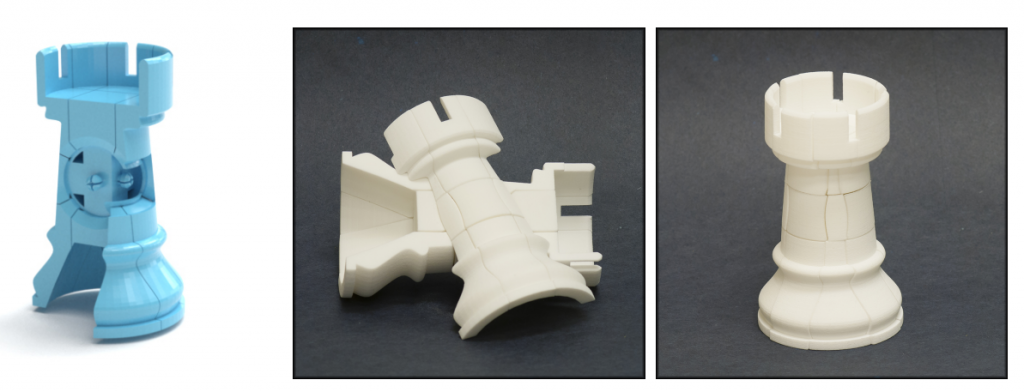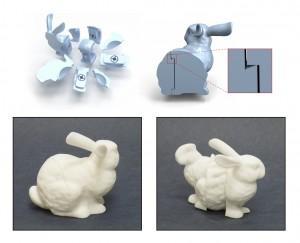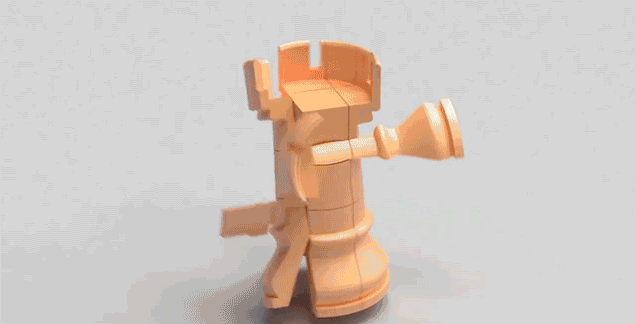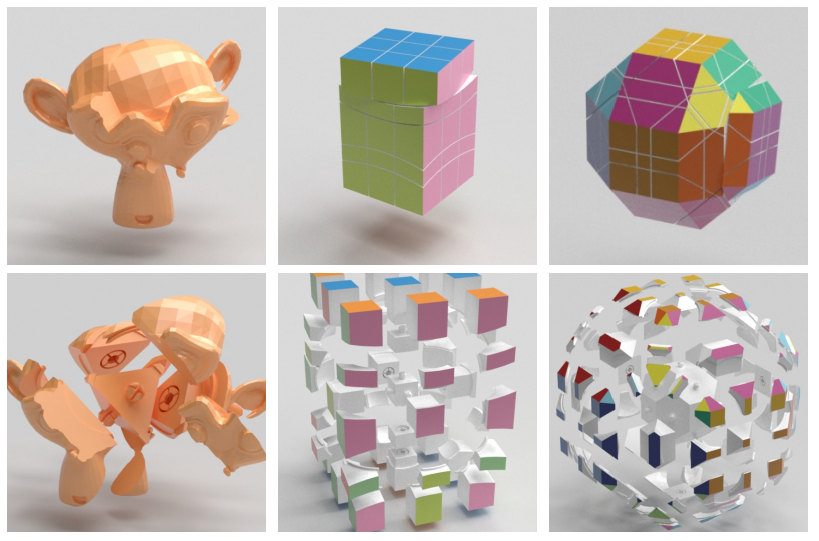The Rubik’s Cube was the first in a very long line of complicated 3D puzzles of varying geometries and complexities popularized in the 1980s. But the development of the specialized geometry that makes these “twisty puzzles” work has had far more uses than just making children’s games. The original design was really quite ingenious, mainly because it satisfied two conflicting mechanical requirements that on the surface seem rather unresolvable. Those same mechanics have found several useful applications in the development of things like mechanical joints, specialized robotics and even omnidirectional security cameras.
The Rubik’s Cube not only rotates around multiple axes and maintains an alignment that allows all of the other axes to be equally rotated, but all of the individual parts are completely interlocked and never fall apart regardless of their configuration. The original, and its subsequent iterations, achieved this by using precisely aligned rotation axes and specialized shapes hidden inside of the puzzle itself. Designing the original puzzle was itself an extremely difficult task, and many of the newer versions and variations require even more specialized design and engineering knowledge, not to mention a lot of trial and error.
But Timothy Sun and Changxi Zheng, a pair of researchers from Columbia University, have developed software that can automatically divide any shaped object of any complexity or geometry, and turn it into a fully functional and completely 3D printable twisty puzzle. While the development of it was quite complex, the method that the final software uses is actually incredibly simple. It basically generalizes the Rubik’s Cube’s original internal mechanism, allowing it to be customized along multiple complex rotational axes.
 The process starts by importing any 3D model into the software and suggesting specific cuts that the user would like the model to rotate along. The software’s algorithm will analyze the desired cuts and then generate new cuts with working rotation axes that allow for complete functional movement. The 3D model is then sliced up into its individual pieces and the software tests all possible configurations and ultimately verifies that none of the parts will collide at any point.
The process starts by importing any 3D model into the software and suggesting specific cuts that the user would like the model to rotate along. The software’s algorithm will analyze the desired cuts and then generate new cuts with working rotation axes that allow for complete functional movement. The 3D model is then sliced up into its individual pieces and the software tests all possible configurations and ultimately verifies that none of the parts will collide at any point.
If any of the individual pieces do collide and the puzzle is prevented from rotating completely along the new axes, the software’s algorithm will detect the collision and automatically suggest a deformation of the part causing the problem. The user simply needs to approve the part’s deformation so the issue can be resolved, resulting in collision-free movement. The puzzle’s internal mechanics that will hold the parts in place and prevent them from falling apart will then be automatically generated. Each part is converted into individual 3D models that can easily be 3D printed and assembled.
Using Sun and Zheng’s software, essentially any object no matter the complexity of shape or geometry can be turned into a unique Rubik’s Cube-inspired twisty puzzle. 3D models as varied as realistic bunny rabbits to action figures to giant chess pieces will work, and any part of the model that prevents complete movement is easily adjusted. But the software won’t just be useful for oddly shaped models, as more traditional twisty puzzle shapes can also be imported and turned into puzzles. These basic shapes can be made with multiple remarkably complex rotational axes, including oddly shaped blocks, varying geometric shapes and even curved pieces that run along curves axes.
Check out this brief video explaining how the process works:
The current generation of the software is already quite robust and functional, but Sun and Zheng do feel that there are several limitations that they would like to eliminate as well as explore new extensions and more complex rotations. The software is currently designed to block rotational axes that will result in any parts colliding, but Sun and Zheng believe that does not always need to be a requirement. It is possible that puzzles can be created with pieces that intentionally block one another to enhance its difficulty and make it harder to solve. This would also be useful in objects designed to have specific functions, like an omnidirectional camera rig.
Because the software was developed to create 3D printable models, the designs are currently limited by existing 3D printer technology. So some geometries will simply be too difficult to print using standard FDM 3D printers.
“We are using the online 3D printing services like shapeways. We used powder-based printing to avoid the need of supporting structures, as the shapes of the pieces can get really complicated,” noted Zheng.
Unfortunately the software does not take into account the final shape of the 3D model, so along the cutting plane some parts may end up being too thin, resulting in them being fragile and breakable. Additionally, depending on the size of the model, the internal joints connecting the parts together may break or deform during use or even during the printing process itself.
But even in its current state, as with the original design of the Rubik’s Cube, the software will have a lot more applications than just generating interesting twisty puzzles. It could potentially be adapted to create robotic or even prosthetic limbs capable of mimicking realistic human movements. With new advanced materials like 3D printable electronics, the software could also be used to create personal electronic devices that can be customized by the user, or even transformed to perform different functions depending on the configuration of parts.
You can read the entire paper on the development of the software and how it works here, and you can let us know what 3D models you want to turn into twisty puzzles in our Turn Any 3D Printable Model into a Rubik’s Cube forum thread at 3DPB.com.
Subscribe to Our Email Newsletter
Stay up-to-date on all the latest news from the 3D printing industry and receive information and offers from third party vendors.
You May Also Like
3D Printing News Briefs, April 13, 2024: Robotics, Orthotics, & Hypersonics
In 3D Printing News Briefs today, we’re focusing first on robotics, as Carnegie Mellon University’s new Robotics Innovation Center will house several community outreach programs, and Ugogo3D is now working...
Rail Giant Alstom Saves $15M with 3D Printing Automation Software 3D Spark
3D Spark has entered into a three-year deal with the rail giant Alstom. Alstom, a transport behemoth with annual revenues of $16 billion, specializes in the manufacture of trains, trams,...
Meltio Expands Global Reach with New Partnerships in the Americas and Europe
Spanish 3D printing manufacturer Meltio has expanded its sales network across the globe. With the addition of three new partners in the United States, Brazil, Argentina, and Italy, Meltio aims...
3D Printing Webinar and Event Roundup: April 7, 2024
Webinars and events in the 3D printing industry are picking back up this week! Sea-Air-Space is coming to Maryland, and SAE International is sponsoring a 3D Systems webinar about 3D...

































